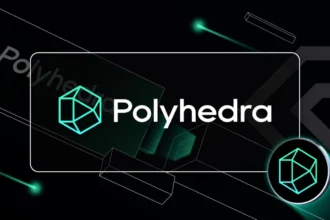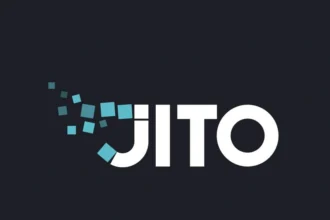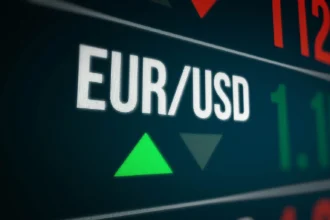Tether (USDT) is one of the most well-known and widely used cryptocurrencies in the market, playing a critical role in the cryptocurrency ecosystem. As a stablecoin, USDT is designed to maintain a 1:1 peg with the U.S. dollar, offering a stable alternative to the volatile nature of traditional cryptocurrencies like Bitcoin and Ethereum. Tether has become a go-to tool for traders, investors, and businesses looking to navigate the unpredictable nature of crypto markets.
In this article, we will explore what Tether (USDT) is, its price prediction for 2025, analyze future trends, and provide key insights into its role in the broader cryptocurrency ecosystem.
What is Tether (USDT)?
Tether (USDT) is a stablecoin that was launched in 2014 by Tether Limited. Its primary function is to provide a cryptocurrency that is pegged to a stable asset, in this case, the U.S. dollar. This means that for every Tether coin in circulation, there is supposed to be an equivalent amount of U.S. dollars (or other assets like Euros or commodities) held in reserves.
Tether is built on various blockchain platforms, including Bitcoin (via the Omni Layer), Ethereum (ERC-20), Tron (TRC-20), and Polygon. This multi-chain approach makes it highly versatile and accessible across a wide range of exchanges and wallets.
The main use case of Tether is to act as a store of value and medium of exchange that minimizes the risks associated with crypto market volatility. While Bitcoin and Ethereum may experience significant price fluctuations, USDT allows traders and investors to park their funds in a stable asset while maintaining exposure to the crypto market.
How Does Tether (USDT) Work?
Tether’s unique appeal lies in its stability. The mechanism behind Tether is relatively simple: Tether Limited claims that for each USDT in circulation, it holds an equivalent amount of U.S. dollars in reserves. This 1:1 backing provides confidence that each Tether coin is worth approximately one U.S. dollar.
Tether’s supply can increase or decrease based on market demand. When the demand for USDT rises, Tether Limited issues more coins to the market, and when demand drops, the company can burn coins, removing them from circulation. This allows Tether to maintain its peg to the U.S. dollar.
However, Tether has faced scrutiny over the years, especially regarding the transparency of its reserves. Critics have questioned whether Tether truly holds enough reserves to back the coins in circulation, but the company has taken steps to improve transparency, including regular audits and third-party reviews.
Tether (USDT) vs. Other Stablecoins
While Tether is the most widely used stablecoin, it is not the only one in the market. Other popular stablecoins include USD Coin (USDC), Dai (DAI), and Binance USD (BUSD). Each stablecoin has its own mechanism for maintaining its peg to the U.S. dollar, and they can differ in terms of transparency, regulation, and security.
- USD Coin (USDC) is fully backed by the U.S. dollar and regularly undergoes third-party audits to verify its reserves.
- Dai (DAI), unlike Tether, is decentralized and algorithmic. It is backed by a basket of collateral assets and maintains its peg through smart contracts.
- Binance USD (BUSD) is a regulated stablecoin issued by Binance in partnership with Paxos, and it is also fully backed by U.S. dollars.
Despite the emergence of other stablecoins, Tether (USDT) remains the dominant player, primarily due to its early launch and widespread use in trading pairs on cryptocurrency exchanges.
Why is Tether (USDT) Important?
Tether (USDT) plays a crucial role in the cryptocurrency market for several reasons:
- Liquidity: USDT is used as a trading pair on nearly every cryptocurrency exchange. It provides liquidity for traders looking to buy or sell other cryptocurrencies, especially in volatile market conditions.
- Risk Mitigation: Tether allows traders to quickly convert volatile cryptocurrencies like Bitcoin or Ethereum into a more stable asset without having to convert to fiat currency. This helps traders avoid significant losses during market downturns.
- Decentralized Finance (DeFi): USDT is widely used in the DeFi space, where it is used for lending, borrowing, and yield farming. Its stable value makes it ideal for these activities.
- Cross-Border Transactions: Tether is a convenient and cost-effective solution for cross-border transactions, especially in countries where access to traditional banking services is limited.
Overall, Tether serves as the backbone of the crypto market, facilitating transactions, providing liquidity, and helping investors navigate the volatile crypto landscape.
Tether (USDT) Price Prediction for 2025
As a stablecoin, Tether (USDT) is designed to maintain its value at $1 USD. Unlike Bitcoin and Ethereum, USDT’s price does not experience dramatic price fluctuations. Instead, its price is inherently stable, thanks to its peg to the U.S. dollar. However, there are several factors that could impact the future of Tether, such as:
- Increased Regulation: Governments worldwide are taking a closer look at stablecoins and considering regulations to ensure their transparency and stability. These regulations could affect the way Tether operates, but they are unlikely to affect its price directly.
- Market Demand: The price of Tether could fluctuate slightly in the short term based on the supply-demand balance, but it is expected to remain close to $1, as it is pegged to the U.S. dollar.
In terms of price prediction, Tether’s price is expected to remain close to $1 through 2025, as it is designed to maintain this peg. However, its role in the broader cryptocurrency market and its adoption within the DeFi sector could continue to grow, making it an essential player in the crypto space.
Future Trends for Tether (USDT)
While Tether’s price stability remains constant, the broader trends surrounding Tether’s adoption and use will shape its future. Here are some key trends to watch for:
1. Increased Use in DeFi
Tether is already widely used in the DeFi sector, where it is used for lending, staking, and liquidity provision. As DeFi continues to grow and attract more users, Tether will play a critical role in providing liquidity and stability to these decentralized applications.
2. Regulatory Scrutiny
Stablecoins, including Tether, are under increased regulatory scrutiny. Governments and regulators are concerned about the potential impact of stablecoins on the traditional financial system. Tether may need to comply with stricter regulations, especially concerning its reserves and transparency. Future regulation will likely shape how Tether operates and could lead to more robust auditing practices.
3. Expansion Across Blockchain Networks
Tether has already expanded its presence on multiple blockchain platforms, including Ethereum, Tron, Binance Smart Chain, and Solana. As new blockchain networks emerge, Tether could further expand its footprint across various platforms to ensure it remains the dominant stablecoin used in decentralized applications and exchanges.
4. Institutional Adoption
As more institutional investors enter the cryptocurrency space, Tether will likely see increased demand for its stable value. Many institutions use Tether as a safe haven during times of market volatility. Tether’s growth in institutional adoption could cement its place as a cornerstone of the digital economy.
5. Integration with Central Bank Digital Currencies (CBDCs)
The rise of Central Bank Digital Currencies (CBDCs) could lead to greater integration between traditional government-backed digital currencies and stablecoins like Tether. If CBDCs become widely adopted, Tether may play a role in the bridge between traditional fiat currencies and cryptocurrencies.
Challenges and Criticisms of Tether (USDT)
Despite its popularity and widespread use, Tether has faced several challenges and criticisms:
- Transparency: Tether has faced criticism over the years regarding the transparency of its reserves. While Tether Limited claims to hold reserves equal to the amount of USDT in circulation, there has been limited independent verification until recently. Some critics argue that Tether’s lack of full transparency could pose risks to its stability.
- Legal Issues: Tether has faced legal challenges, including a lawsuit from the New York Attorney General’s office. These legal issues have raised concerns about the future of Tether, particularly with regard to its regulatory compliance and financial backing.
Conclusion: The Future of Tether (USDT)
Tether (USDT) is a vital component of the cryptocurrency market, offering a stable alternative to more volatile digital assets like Bitcoin and Ethereum. It provides liquidity, risk mitigation, and a medium of exchange for traders and investors, especially within the rapidly growing DeFi ecosystem.
While Tether’s price will likely remain pegged to $1 USD through 2025, the broader trends surrounding its use, adoption, and regulatory environment will shape its future. As DeFi continues to grow, Tether’s role as a stablecoin will become even more critical, and its integration with traditional finance and blockchain networks could secure its position as the leading stablecoin in the crypto market.
Despite facing challenges, including regulatory scrutiny and transparency issues, Tether remains an essential player in the cryptocurrency ecosystem. Its ability to maintain its peg to the U.S. dollar, combined with its widespread adoption, makes it a fundamental tool for navigating the ever-evolving world of digital finance.
Key Takeaways:
- Tether (USDT) is a stablecoin designed to maintain a 1:1 peg with the U.S. dollar, providing stability in the volatile crypto market.
- USDT is crucial for liquidity in the crypto market, especially within DeFi applications and as a trading pair on exchanges.
- Tether’s price is expected to remain around $1 in 2025, but its role in the cryptocurrency ecosystem will continue to grow.
- Regulatory scrutiny, transparency improvements, and DeFi expansion are key factors that will shape Tether’s future.



